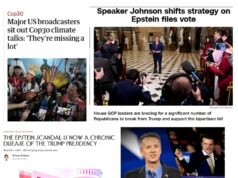Sign up for our email alerts and be the first to know when we release new episodes.
On September 8th, President Barack Obama introduced his plan to create jobs and curb unemployment; The American Jobs Act.
A tough road lies ahead for the American Jobs Act, with Republicans lining up against it and some conservative Democrats publicly expressing concerns. But behind the political chatter there is a bill and whether you like it or not it is important to know what is actually in it.
You’ve got 90 seconds, so please check out this week’s episode. And as always, more information below the fold.
90 Second Summaries: Season 2, Episode 23
S. 1549: American Jobs Act of 2011
Introduced 9/13/2011
Sponsor: Sen. Harry Reid (D-NV) on behalf of President Obama
Click here to download this summary (pdf)
Cosponsors: None
Status: Bypassed committees entirely upon introduction. Will likely be brought to Senate floor within the next couple of weeks, but unlikely to reach the 60-vote threshold on a motion to proceed to debate.
House Companion: H.R. 12, sponsored by Dem Caucus Chair John Larson (D-CT1) at the request of the President. No cosponsors. Referred to Ways and Means and ten other committees with partial jurisdiction. Highly unlikely to move barring a compromise deal.
Purpose: America currently faces two dueling crises: deficits and jobs. For most of this year, the focus in Washington has been on debt reduction and spending cuts, but such measures only serve to worsen the unemployment situation. Thus, in response to the August deal that paired a raise in the debt ceiling with substantial spending cuts and the formation of a “Super Committee” on deficit reduction, the outcry for federal action to create jobs has grown. President Obama responded with a major speech to Congress on September 8th, in which he announced the American Jobs Act.
Summary: The $447 billion American Jobs Act contains three major components:
1) Tax Cuts for Individuals and Businesses
• Cuts the employee payroll tax in half (from 6.2% to 3.1%) for 2012 (Cost: $175B)
• Cuts the employer payroll tax in half for the first $5 million of payroll for 2012, and completely eliminates the payroll tax for new employees. ($65B)
• Allows 100% expensing of business investments. ($5B)
• Offers a tax credit of up to $4,000 for businesses hiring workers unemployed for over six months. ($8B)
Total: $253 billion (56.6% of total)
2) Infrastructure and Investment Spending
• Aid to states in order to prevent teacher layoffs ($30B) and police and firefighter layoffs ($5B).
• Grants for modernization of K-12 school facilities ($25B) and community college facilities ($5B).
• Immediate investment in infrastructure, including highways ($27B), transit system repairs ($9B), intercity rail ($2B), high-speed rail ($4B), airports ($2B), air traffic modernization technology ($1B), and innovative multimodal transportation programs ($5B).
• Creation of a National Infrastructure Bank, modeled on the Kerry-Hutchison BUILD Act ($10B)
• Project Rebuild, designed to rehibilitate and repurpose foreclosed-upon properties in distressed communities ($15B)
• Development and implementation of a nationwide wireless broadband network ($7B) and reallocation of some spectrum for public safety purposes ($3B). The costs of this program would be offset by auctioning off spectrum.
Total: $140 billion (31.3% of total)
3) Help for Unemployed Americans
• Extension of the Emergency Unemployment Compensation Program and various extended benefit provisions through 2012.
• Reform of the unemployment insurance system to encourage the states to implement innovative reemployment assistance, work sharing, wage insurance and training programs for beneficiaries (Combined $49B).
• Creation of a Pathways Back to Work Fund designed to help low-income unemployed Americans find work ($5B).
• Prohibition of discrimination against the unemployed in hiring decisions.
Total: $54 billion (12.1% of total)
The bill also contains some offsets from tax increases targeted to upper-income Americans and ending oil and gas industry subsidies. To fully offset the cost of the legislation, it mandates the “Super Committee” to find an extra $450 billion in deficit reduction measures.
CBO Score: None provided.
Supporters: President Obama, most Democrats, infrastructure advocates, teachers and first responders, etc.
• Supporters see this as a win-win proposal, one that would create or save millions of American jobs and thus aid Democratic fortunes in the 2012 election cycle.
Opponents: most Republicans, Tea Party activists
• Many opponents believe only the private sector, not government, can create jobs, and the best way to turn the economy around is to shrink the government. Furthermore, they staunchly oppose to the taxes increases on the rich proposed as offsets. Some, however, simply see continued economic troubles as a boon for Republicans in 2012.
Further links
Full bill text: http://www.govtrack.us/congress/billtext.xpd?bill=s112-1549
In-depth Obama Administration summary: http://www.whitehouse.gov/the-press-office/2011/09/08/fact-sheet-and-overview
Ctr for American Progress on the infrastructure portion: http://www.americanprogress.org/issues/2011/09/aja_infrastructure.html
Gov’t Security News article detailing the wireless broadband plan: http://www.gsnmagazine.com/node/23613
Cross-posted from Main Street Insider. Sign up for our emails, subscribe to our youtube channel, like us on facebook, follow us on twitter, grab our RSS feed.













![[UPDATED with Jim Ryan’s Letter] In Response to Youngkin’s “Sad, Whiny” Letter to Spanberger About UVA, VA Senate Majority Leader Surovell Says He’s “truly embarrassed for Gov Youngkin…After 4 yrs he has no understanding of basic VA govt structure”](https://bluevirginia.us/wp-content/uploads/2025/11/youngkinspanuva3-100x75.jpg)